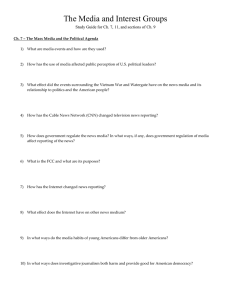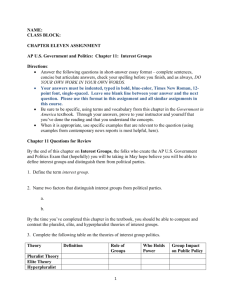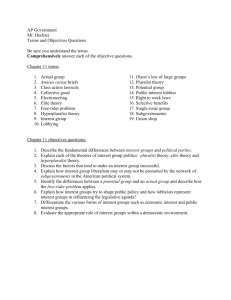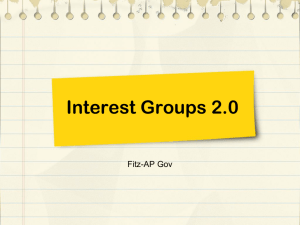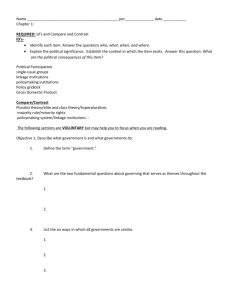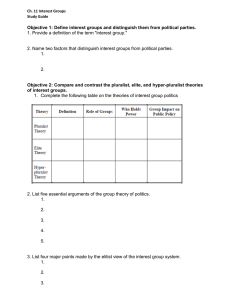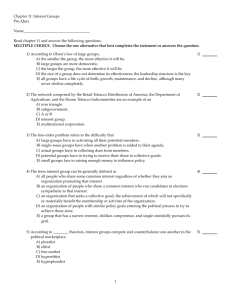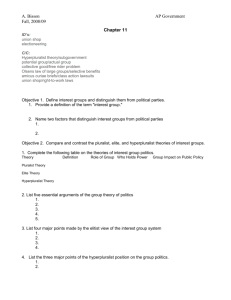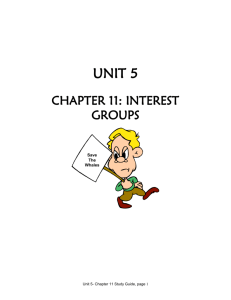Chapter 11 Study Guide: interest groups
advertisement
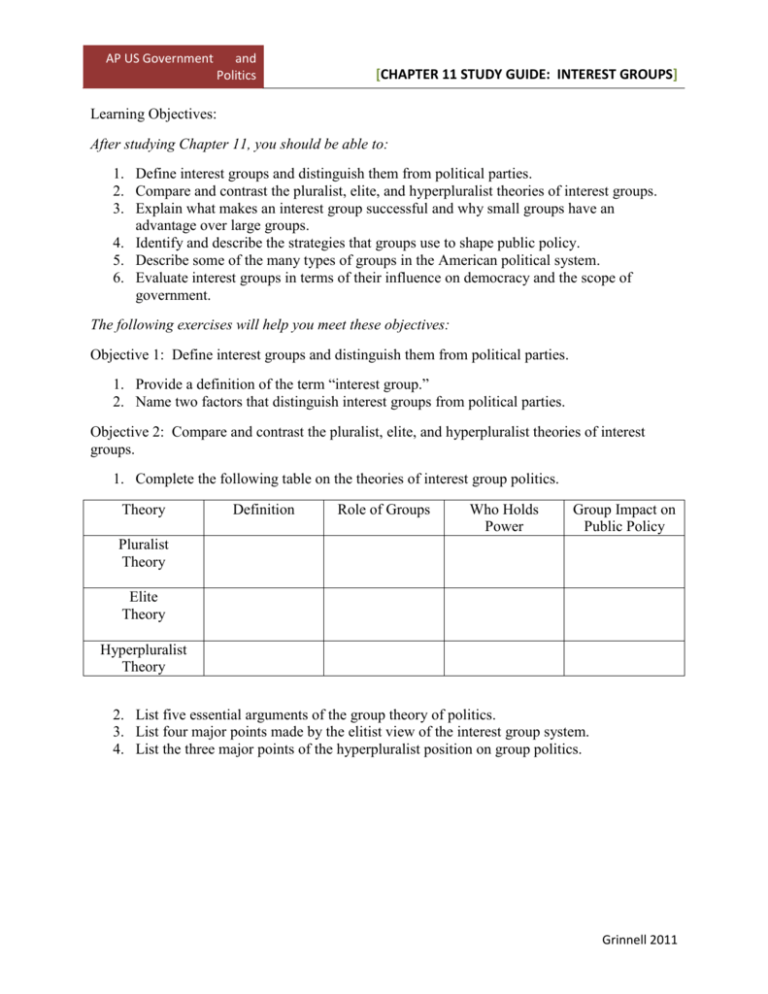
AP US Government and Politics [CHAPTER 11 STUDY GUIDE: INTEREST GROUPS] Learning Objectives: After studying Chapter 11, you should be able to: 1. Define interest groups and distinguish them from political parties. 2. Compare and contrast the pluralist, elite, and hyperpluralist theories of interest groups. 3. Explain what makes an interest group successful and why small groups have an advantage over large groups. 4. Identify and describe the strategies that groups use to shape public policy. 5. Describe some of the many types of groups in the American political system. 6. Evaluate interest groups in terms of their influence on democracy and the scope of government. The following exercises will help you meet these objectives: Objective 1: Define interest groups and distinguish them from political parties. 1. Provide a definition of the term “interest group.” 2. Name two factors that distinguish interest groups from political parties. Objective 2: Compare and contrast the pluralist, elite, and hyperpluralist theories of interest groups. 1. Complete the following table on the theories of interest group politics. Theory Definition Role of Groups Who Holds Power Group Impact on Public Policy Pluralist Theory Elite Theory Hyperpluralist Theory 2. List five essential arguments of the group theory of politics. 3. List four major points made by the elitist view of the interest group system. 4. List the three major points of the hyperpluralist position on group politics. Grinnell 2011 AP US Government and Politics [CHAPTER 11 STUDY GUIDE: INTEREST GROUPS] Objective 3: Explain what makes an interest group successful and why small groups have an advantage over large groups. 1. What is the difference between a potential group and an actual group? 2. What is Olson’s law of large groups? 3. Define the term single-issue group and give an example. Objective 4: Identify and describe the strategies that groups use to shape public policy. 1. 2. 3. 4. 5. List the four general strategies used by interest groups to shape public policy. What are basic types of lobbyists? List four important ways lobbyists can help a member of Congress. Why does PAC money go overwhelmingly to incumbents? What is an amicus curiae brief? Objective 5: Describe some of the many types of groups in the American political system. 1. 2. 3. 4. What was the main purpose of the Taft-Hartley Act? What are the two main organizations that speak for corporations and business? What is meant by a public interest lobby? List three items environmental groups have promoted and three items they have opposed. a. Promoted: b. Opposed: 5. Name two important organization involved in promoting equality and summarize their major goals. Objective 6: Evaluate interest groups in terms of their influence on democracy and the scope of government. 1. Summarize the pluralist, elitist, and hyperpluralist perspectives on interest groups and democracy. a. Pluralist: b. Elitists: c. Hyperpluralist: 2. How do interest groups affect the scope of government? MAKE SURE YOU ALSO KNOW THE KEY TERMS FROM THE CHAPTER SUMMARY! Grinnell 2011

